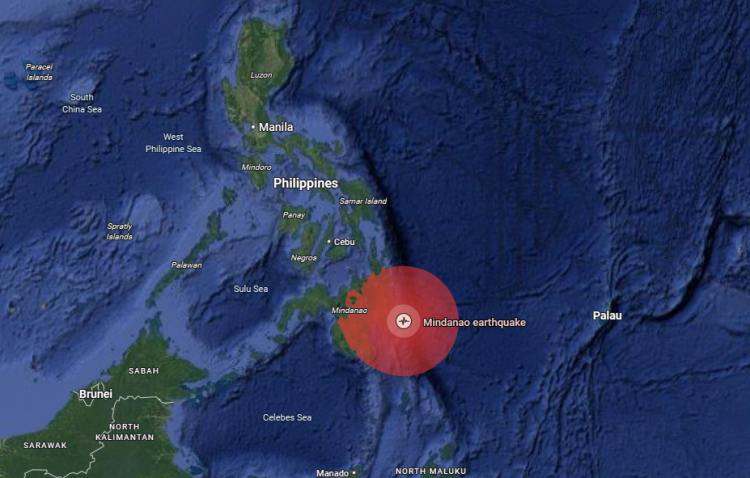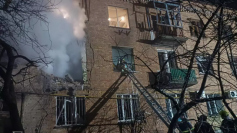Two powerful earthquakes struck the southern Philippines on Friday, killing at least six people, injuring dozens, and prompting widespread panic as tsunami warnings rippled across the region. The first quake, a magnitude 7.4 tremor, struck just before 10 a.m. local time off the coast of Manay in Davao Oriental province, followed nearly ten hours later by a magnitude 6.7 aftershock, according to the United States Geological Survey.
Authorities said Friday's twin shocks were among the strongest in years to hit Mindanao, where rescuers raced to reach collapsed tunnels and damaged buildings. Three miners died when a gold shaft caved in near Pantukan town, rescue official Kent Simeon told AFP, while another was pulled out alive. "Some tunnels collapsed, but the miners managed to get out," Simeon said.
Civil defense officials confirmed additional casualties, including two people killed in Mati City when a wall collapsed and another who suffered a fatal heart attack during the quake. Two hospital patients also died of heart attacks during the initial tremor, said regional disaster director Ednar Dayanghirang. In Davao City, 100 miles from the epicenter, one person was crushed by falling debris, police reported.
The Philippine Institute of Volcanology and Seismology (Phivolcs) issued immediate tsunami warnings for coastal areas within 300 kilometers of the epicenter, urging residents to evacuate to higher ground. People living near coastal areas in the southern Philippines were "strongly advised to immediately evacuate," the agency said in an advisory. The Pacific Tsunami Warning Center later lifted its alert for the Philippines, Palau, and Indonesia by midday.
Witnesses described scenes of chaos as buildings swayed and power lines snapped. "They screamed and ran," said Tagum City official Wes Caasi, who saw workers scramble down a metal Christmas tree during the first quake. In Davao del Norte, Governor Edwin Jubahib said residents panicked when the ground began to shake. "Some buildings were reported to have been damaged," he told DZMM radio. "It was very strong."
Richie Diuyen, a disaster official in Manay, said the first quake lasted "30 to 40 seconds" and damaged homes, bridges, and a church facade. "We couldn't stand earlier. I am 46 years old now, and this is the strongest earthquake I ever felt," he said by phone.
In nearby Compostela, teacher Christine Sierte described her terror as her classroom trembled. "It was very slow at first, then it got stronger.... That's the longest time of my life. We weren't able to walk out of the building immediately because the shaking was so strong," she told AFP. She said ceilings collapsed in some offices but no one was injured.
More than 300 aftershocks were recorded by Friday night, with Phivolcs warning of continued tremors "as large as magnitude 6.4." Authorities said over 200 patients were evacuated from the Manay District Hospital after its foundations cracked, with tents set up outside for treatment. Disaster officer Jun Saavedra said a high school building also sustained heavy damage. "We've had earthquakes in the past, but this was the strongest," he said.
Philippine President Ferdinand Marcos Jr. said emergency teams were being deployed to affected regions. "We are working round the clock to ensure that help reaches everyone who needs it," he said in a statement.
Earthquakes are frequent in the Philippines, which lies on the Pacific "Ring of Fire," a zone of intense seismic and volcanic activity. The country is still recovering from a magnitude 6.9 quake that killed 75 people in Cebu province less than two weeks ago.






